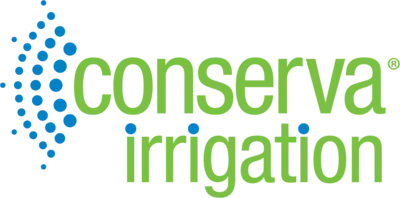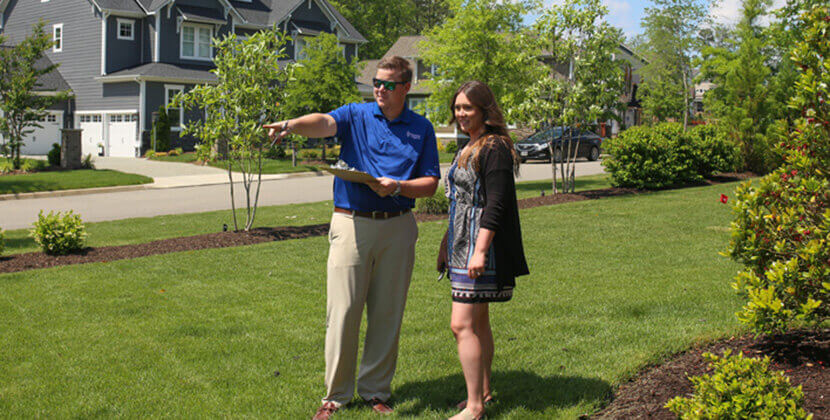According to a recent GAO survey of water managers, 36 states are anticipating local, regional, or statewide water shortages in the future. So far, Colorado, Arizona, Utah and New Mexico are some of the states that have been hit hardest by drought conditions, warmer temperatures, and water restrictions. With many more states expected to reach “exceptional” conditions throughout the summer months, the topic of water conservation has forced those in the contracting industry to ask themselves how to make their work more efficient.
The EPA has stated that 50% of water used outdoors is wasted and that 1.5 billion gallons of water is wasted due to irrigation. Because the irrigation industry has had such a substantial effect on water waste, it is up to us to popularize simple step-by-step assessments that can have long-lasting impacts. Since July is Smart Irrigation Month, now is the perfect time to start the conversation about water conservation and how it will affect our industry. At Conserva Irrigation, it’s all about going back to the basics and trying to be a smart contractor.
Below, we talk about seven steps that Conserva Irrigation utilizes to identify when a water system is wasteful and how to fix the problem. These seven steps can save residents and business owners thousands of gallons of water every day.
Step #1: Assign Values to a Water Budgeting Tool
The first step an irrigation contractor should take is to use the right water budgeting tool to determine how much water the system should normally be using in a year. Conserva Irrigation uses a proprietary process to assess residential irrigation systems. Our “System Efficiency Score” rates the water efficiency of a system based on a numerical scale. When it comes to commercial irrigation system we use our Commercial Site Assessment (CSA). Our signature assessment systems make use of studies published by the Irrigation Association and the Environmental Protection Agency.
Step #2: Compare the Amount of Water Being Used & Wasted
Comparing these two differentiating numbers allows us to determine the extent of water waste from an inefficient system. Most people don’t realize the impact that broken sprinkler heads and ground runoff can have on the amount of water they waste each year.
Step #3: Finding What’s Broken
If you want to find what is wrong with an inefficient system, you will need to have boots on the ground to perform a detailed assessment of each sprinkler head, main, or lateral line to locate any leaks or broken components. The only way to make a good strategy that will remedy the water waste issue is to walk the entire system zone by zone.
Step #4: Apply the Strategy to the Broken Components
After we’ve established the water consumption level and have a strategy to increase the efficiency of the system, it’s time to make repairs and adjustments in order of importance. Our goal is to give customers the most eco-friendly irrigation system possible.
Step #5: Switching Inefficient Spray Nozzles with High-Efficiency Spray Nozzles
After making the repairs and adjustments, we look for more opportunities to make the irrigation system better perform and save water. This includes:
- Optimizing Head Placement
- Adjusting Sprinkler Heads
- Making Sure Water Is Evenly Distributed Throughout the Landscape
Swapping out efficient spray nozzles with high-efficiency spray nozzles can immediately reduce water usage by up to 35%.
Step #6: Monitor the System
Once the system has been retrofitted, it’s time to monitor the system’s water usage again by going through each zone to determine if efficiency has increased and if the water consumption levels have dropped. If neither of these things have occurred, contractors should go back to step 3 and search again for breaks and inconsistencies in the irrigation system.
Step #7: Install Smart Controller Technology
After the previous steps have been thoroughly completed, smart controller technology can be introduced into the irrigation system. 40 years of weather data for the exact latitude and longitude of the home or business is loaded into the smart controller to gauge how much water should be used based on previous weather conditions and patterns for the location. The onsite weather sensor also adjusts and modifies the irrigation system to exact weather factors at that moment.
At Conserva Irrigation, it is our goal to take a creative approach to how our irrigation franchises can better conserve water and help reduce water waste for home and business owners. If you are looking to be your own boss or want to achieve financial freedom, our franchise opportunities might be just right for you. Our professional, innovative, and environmentally responsible irrigation services give our franchise owners consistent and predictable revenue backed by a brand that people trust.
Do you think Conserva Irrigation might be right for you? Call (804) 621-7167 to learn more about irrigation franchise opportunities near you.


